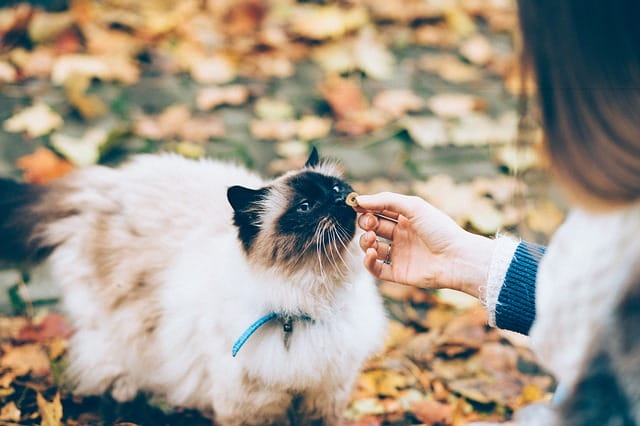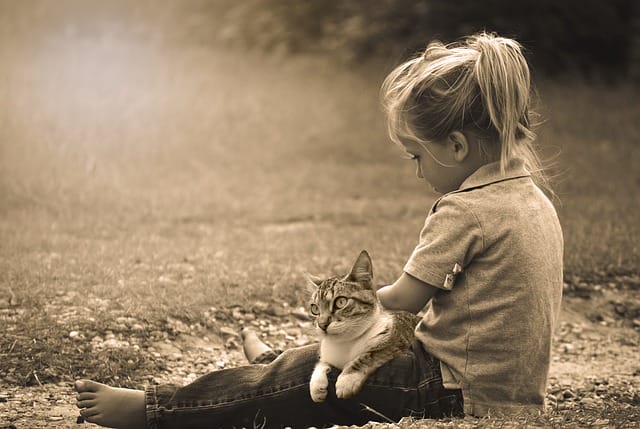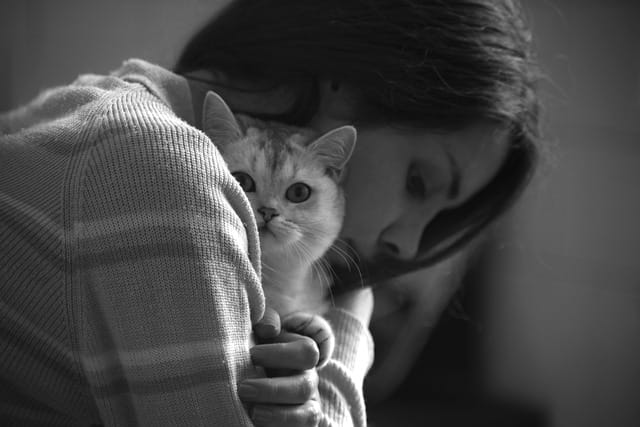
When we look at a cat, what do we notice?
A tiny fuzzy creature with a nice long tail, perhaps a hint of arrogance.
It’s unquestionably a cat, but exactly what is it thinking when it sees us?
Cat cognition is inferior to that of dogs in the field of psychology, making it difficult to comprehend how cats view people.
Understanding your cat’s thoughts and behavior may help you have a better connection with him.
We’ll never know what they’re thinking, but we can certainly gather hints about their emotions of not just pain but also contentment, annoyance, fear, and sadness. We can also speculate about their ability to feel empathy
Yui Shapard, a small-animal veterinarian and educational director of the Association of Veterinarians for Animal Rights.
Cats are smart enough to know the difference between humans because they’re world-class predators, but does that mean they can think like people?
More importantly, do they want to?
What does my cat think when it sees me?
Analyze your own actions to comprehend your cat’s thoughts.
Cats are constantly in touch with humans, a connection that affects their thought and subsequent behavior.
“Cats react differently to people depending on their mood, according to research,” Emma Grigg, a certified animal behaviorist and lecturer at the University of California.
“As for what your cat thinks when it looks at you, I’d say that depends on your shared history with that cat,” she adds.
“Studies have also shown that cats look to humans for signals about whether a situation is worrisome or not, and they may follow human body language in order to assist solve issues.”
Cat cognition is a young scientific field right now, therefore you will have to wait for more study to understand your cat’s thinking.
“We are still learning a lot about domestic cat cognition, behavior, and interactions with humans,” Grigg points out.
“There are still many unanswered questions about cat behavior, particularly the internal experiences of cats, and how they construct meaning out of their interactions with humans.”
Is it possible that my cat thinks I’m a bigger cat?

“They may not be aware that we are a separate species, or they just don’t care,” says Molly DeVoss, a certified feline training and behavior expert who runs the nonprofit Cat Behavior Solutions.
Others had heard the notion discussed in scientific circles, but they, too, were unconvinced. “I’m not sure it’s true,” Grigg adds.
Dogs are not as cognitively capable of telling the difference between a person and a dog, for example, as cats are.
Griggs explains that studies on dog cognition do not support the idea that dogs see humans as larger dogs, and its likely cats would too.
Rather, cats regard us as social companions who are “a valuable source of food, protection, and territory.”
Your cat has an uncanny way of figuring out humans exist.
“Cats evolved to be good at understanding what humans are likely to do because the ability to cope with unpredictable people is vital for their survival,” Grigg adds.
“Cats are more likely to see unfamiliar humans as a potential predator or another type of serious threat rather than as another cat,” according to Grigg.
Dr. Chyrle Bonk at Excitedcats.com has her own spin on the “larger cat” notion.
Cats frequently use gestures like licking and stroking to communicate with humans, which suggests they are trying to be cute.
“Cats have the ability to understand their human is a big bipedal predator that could seriously injure them so they need to control themselves around people,” she says.
Stelow thinks cats will reciprocate their human caregivers’ love with a similar degree of devotion they show to other cats.
“We can elicit the purring and kneading behaviors they first exhibited with their moms,” Stelow adds, suggesting that cats will bring us food or play with us similarly to how they would with young kittens.
“Similar to the way people are assumed to be dogs by dogs, I think cats also see us as large giant cats.”
Is it possible for cats to detect human emotions?

Scientists think that cats aren’t as good as dogs at reading human emotions, according to the limited research we have.
“Unlike dogs, cats can’t tell human faces apart and don’t react to facial emotions,” DeVoss claims.
The answer is that cats are blind when it comes to their humans since they rely mostly on smell rather than sight.
Some new research, however, suggests that cats may be able to interpret our facial emotions better than previously thought.
In 2019, scientists discovered that cats can read human eyes for information.
Cats’ cognitive recognition of human emotion — sadness, anger, and joy — demonstrated in auditory and facial emotions has been recognized in certain studies, according to Dr. Shapard.
“Similarly, when we are emotionally different, cats feel as though we are unpredictable and attempt to figure out what’s going on,” DeVoss adds.
When cats show affection for their humans, it is possible that they are attempting to mimic the behaviors of mother cats.
They are responding to us in the same way that kittens respond to their mothers which also includes purring, kneading behavior, and head-butting.
Even if experts think that cats can’t read our faces, they may still infer our feelings from our body language.
Experts say that because of preconceptions about cats being aloof or uncaring, many individuals believe felines cannot comprehend human emotions.
“I suspect many popular misconceptions and entrenched beliefs regarding cats are based on popular misconceptions and entrenched folklore rather than reality,” Grigg adds.
Do cats give us clues about what they think of us?

The short answer is yes.
According to the scientific understanding of cat behavioral signals and whether your petting is appreciated or not, experts offer a few recommendations for improving your connection with your cat.
As a general rule, it’s usually best to let the cat approach you on their own terms, according to Grigg.
She suggests conducting a simple consent test before petting your cat to see if they are approachable.
“If you want a cuddle, don’t just pick the purring ball of fur up off the floor and hold them tight… this will often have their rear claws out in defense within moments,” Grigg adds.
“For example, if you pet them and then stop, do they ‘come back for more,’ so to speak?” Grigg adds.
“We can also avoid being harmed when performing something a cat does not want by paying attention and not smooching your cat just because you want attention”.
Make sure your feline is comfortable and check if your cat is psychopathic.
Dr. Bonk explains, “You may get a lot of information about what a cat is thinking by how they react.
They aren’t afraid to tell you if they dislike something or aren’t fond of anything at all.” “We can also determine subtle clues like a whooshing tail as an indication of irritation, or sleeping with their head on your lap as an indication they like you,” Bonk adds.
Grigg adds that veterinarians may use the Glasgow Pain Scale, which is a measuring tool used to assess what cats are thinking, particularly looking at body and face cues for indications of discomfort or pain.
The scale includes 28 different types of actions, ranging from purring to a swishing tail. “These signs can be a bit more subtle in cats, but they’re still there,” Grigg adds.
At the end of the day, it’s up to you as their caregiver to pay attention to the actions your cat performs and figure out what’s going on.
Even when human owners suspect something is wrong with their cats, few seek behavioral therapy according to research.


GIPHY App Key not set. Please check settings